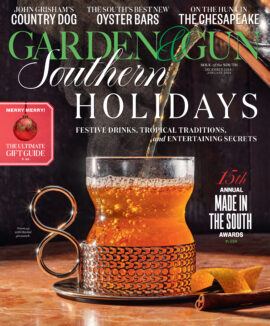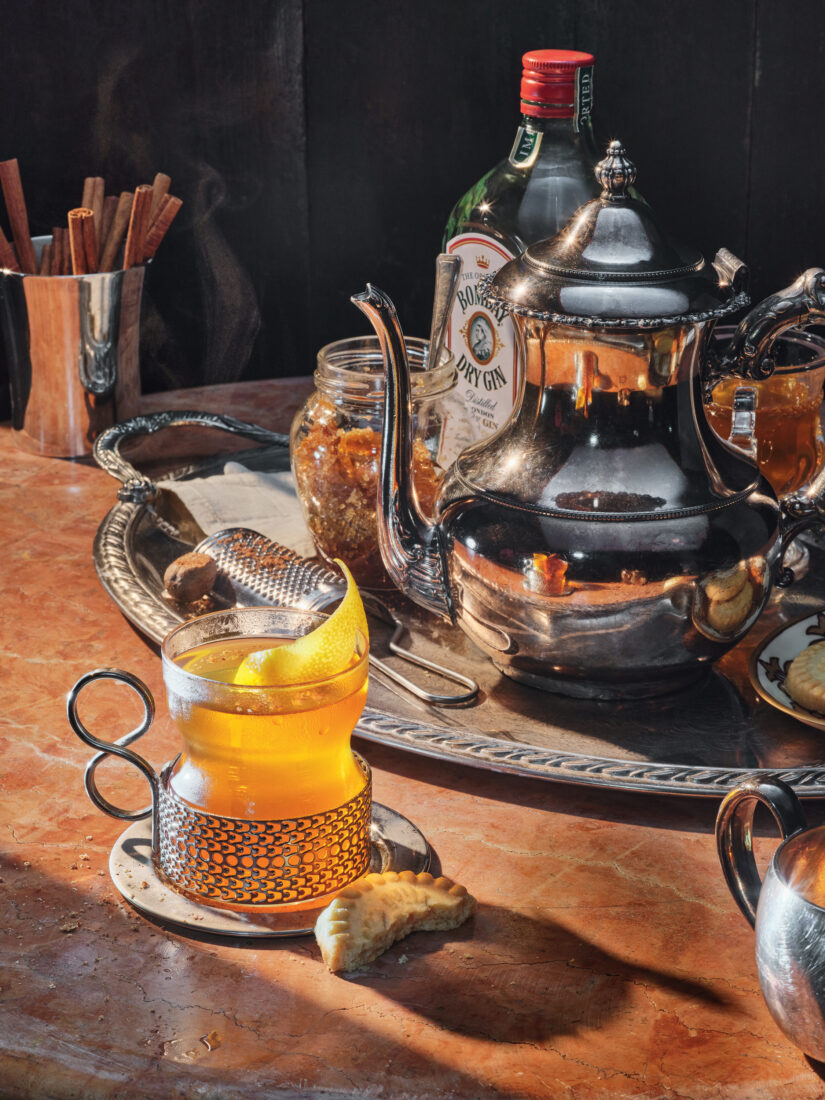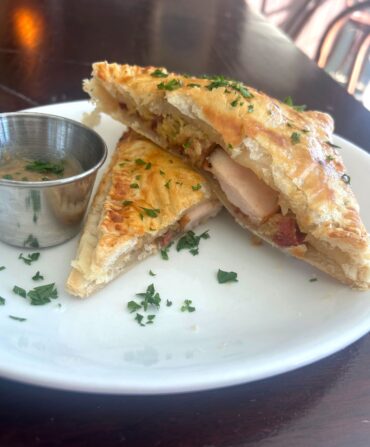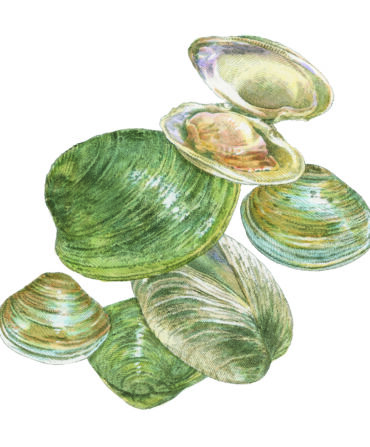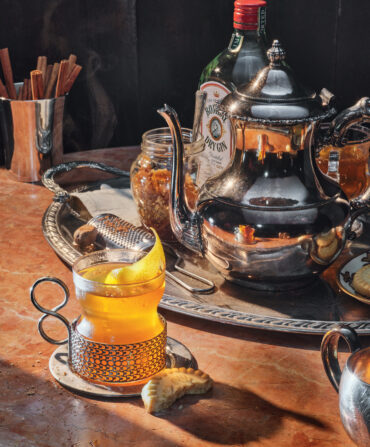Gin and summer have long had a storied relationship. The merest sip, especially if enhanced with quinine, will for many bring forth balmy memories: the ceaseless thwock of tennis balls, the aggressively hygienic aroma of a chlorinated swimming pool.
But gin has had a winter side hustle since at least Victorian times. It can even comport itself well at a holiday gathering. The key is to warm it up.

“Hot gin punch” may not sound all that inviting—none of the three words play especially well together—but it turns out the Victorians were onto something. Perhaps no one was more responsible for its popularity than Charles Dickens. In A Christmas Carol (1843), Dickens wrote that Bob Cratchit “compounded some hot mixture in a jug with gin and lemons, and stirred it round and round and put it on the hob to simmer.”
Among the author’s own habits, he was known to dragoon a hapless houseguest or two into taking a ten-mile walk with him, after which they would enjoy dinner, followed by cigars, billiards, and a nightcap of hot gin punch. Dickens always made the drink himself, placing a jug of it by a fire to warm ( just as Cratchit did). He didn’t require guests to imbibe it with him, but if one declined, Dickens apparently took it poorly. Future invitations might be scarce.
Hot gin punch didn’t confine itself to the blustery British Isles, though. Its popularity spread to wherever Dickens was read, which is to say everywhere, including Florida. “Hot gin punch is the latest Orlando drink,” reported the Orlando Sentinel in 1935, “and is calculated to do the work of two Georgia mules going down hill.”
A wonderful thing about punches is that they’re less a recipe than a set of lines within which you’re invited to color. If you go outside the lines, nobody much cares. This recipe, adapted from one favored by Dickens’s great-grandson Cedric Dickens, calls for gin and Madeira wine, which comes from the island of Madeira, a Portuguese territory five hundred miles off the coast of Africa. The wine was in vogue in the eighteenth and nineteenth centuries and fortified with a bit of brandy, making it less liable to spoil on hot, humid sea voyages.
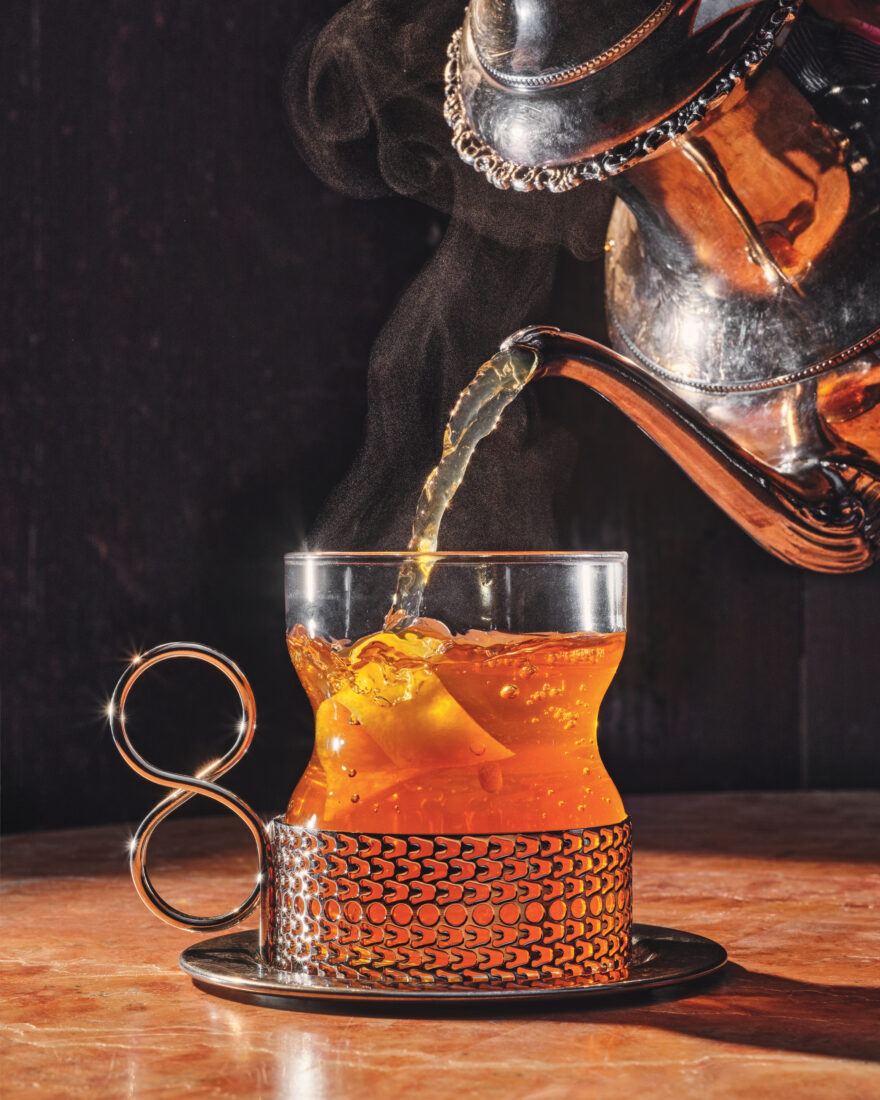
Dickens often referred to Madeira in his writings, and today it’s frequently associated with Mr. Micawber’s punch, a hot gin punch variant (sometimes made with rum) named after the David Copperfield character. Strangely enough, Madeira doesn’t appear in that novel, but Cedric Dickens’s hot gin punch recipe in his book Drinking with Dickens calls for it.
No arguments here. The Madeira creates a superior drink by beveling the sharp edges of the citrus and gin. As Dickens was prone to do, this recipe uses an oleosaccharum, a more subtle and layered lemon-scented sugar, instead of fresh lemon juice. It takes a little extra time, but the yield in flavor exceeds the labor involved.
Serve this in a teapot, either set by a fire or not. Teacups make fine vessels for sipping it with guests. But how you enjoy the drink is less important than that you enjoy it. As Mr. Micawber says to Mr. Copperfield, punch, “like time and tide, waits for no man.”

